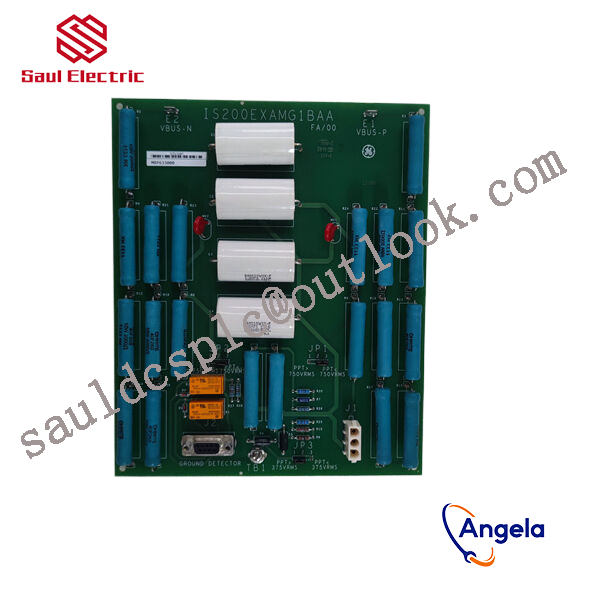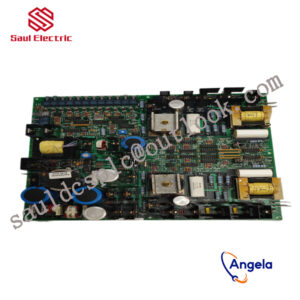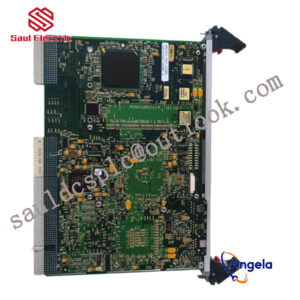Description
IS420YDIAS1B Product Introduction
The specific application scope of the product
will depend on the needs of system integration and industrial application, but generally speaking, this type of embedded controller module can be applied to the following categories:
manufacturing processes, etc.
monitoring and control system.
of the controller module, as well as the specific needs of the customer.
designed to manage gas or steam turbines.
It has a CIMPLICITY graphical interface and an HMI with software suitable for running heavy-duty turbines.
be installed at the bottom of the cabinet. For a small setup that is easy to serve a triple redundant system, up to three components can be installed side by side.
he board can operate within a temperature range of 0 to 65 degrees Celsius without the need for a fan for cooling. NFPA Class 1. This board can be used for two applications.
Caijing: Can we say that ABB is part of Made in China 2025? Spiesshofer: Of course, we are a very important part. We were involved in coming up with this idea and we will be deeply involved in making it happen. Now we have about 18,000 employees in China, with many manufacturing plants and large R&D centers. We also have a software center in China to develop artificial intelligence technology used on robots. At present, China not only has a market for ABB, but also has an excellent team that I am very proud of. Caijing: The current problem is that Made in China 2025 has posed a challenge to Europe and the United States. They believe that they need to pay close attention to it. The current trade policy of the United States is also very targeted at Made in China 2025. How do you view this criticism? Spiesshofer: I don’t want to comment too much on policy. China”s competitiveness has grown significantly over the past few decades, but the rest of the world has not stood still. Take Europe”s technological development, for example. Europe is playing a leading role in the fourth industrial revolution. I want to have a level playing field and give everyone a chance. It is true that China is an economic power, and there are other economic powers in the world. The world is big enough to accommodate the friendly coexistence of all these forces. The Industrial Internet is inseparable from industrial control Caijing: Regarding digitization, there are two questions. Why digitization? How to digitize? Spiesshofer: People have been benefiting from technologies that improve productivity. Through digitalization, we can improve productivity very well. We introduce a closed loop of “perception, analysis, and action” to sense through digital technologies such as sensors , communication devices, and connected devices. We learn the operation status of assets through sensor technology, upload it to the cloud, and summarize the information. After we have the information, we need to analyze the information. AI technology plays an important role in this process, that is, intelligent algorithms for analyzing data. Then comes the action part, where you need to get into the control loop of an industrial process or maintenance plan to make it work. Like AI, we should not be afraid of digitalization, but rather see it as an opportunity to create prosperity and wealth. Caijing: Regarding the Industrial Internet, GE, which proposed this concept, has changed its CEO and its performance is poor. Does this mean that its development is not going smoothly? How do you see the future of the Industrial Internet? Spiesshofer: If used well, the industrial Internet can be very effective. To review what I said: perception, analysis and action are required. Our strategy is different from GE”s strategy. They stop after sensing and analyzing, while we still have an action phase. Through our control system, the Industrial Internet is connected to the control loop through intelligent algorithms, which can create a lot of value for customers. ABB is one of the two major industrial control technology companies in the world. Siemens is the leader in the discrete industry. We are second only to Siemens. In the process industry, ABB ranks first and Siemens second. This is the biggest difference between ABB and GE: GE does not control the circulation or has no control ability. It is like you are a doctor. You only diagnose high fever and give the patient your suggestions, but ABB not only gives suggestions, but also helps patients implement the suggestions. . Caijing: You also mentioned the concept of global energy internet. Is this a future concept or something that is already happening? What is its value? Spiesshofer: The energy challenge facing people today is how to provide predictable, high-quality, low-carbon baseload energy. There are different ways to achieve this, bringing together different renewable and conventional energy sources, plus nuclear power. All of the previously mentioned energy sources can also be connected together through a globally interconnected power grid. We must also incorporate active demand-side management and intelligent demand-side optimization to achieve peak-cutting effects through demand-side model optimization. Overall, there will be a globally interconnected power system in the future that will operate completely differently with demand-side dynamics ranging from long distances all the way to local. The roof of your house is equipped with solar energy. It may be a power station in the morning, a power user in the afternoon, and it may be an energy storage power station in the evening because you are charging your electric car. Optimizing all of this is what I call the Internet of Power, and that”s what we”re working on.
IS200ERBPG1A High performance processor module GE
IS200ESYSH3A Gas turbine system Mark VI
IS215ISBBH1A I/O excitation redundant module GE
DS200DSFBG1ACB Gas turbine system Mark VI
IS200DTAIH1ACC Processor/Controller Mark VI System
IS200VPWRH1A GE power control board
IS200JPDPG1A Processor/Controller Mark VI System
DS200DCFBG1BNC GE power control board
IS200XDIAG1A High performance processor module GE
IS210AEPSG2BBA Gas turbine system Mark VI
DS200FGPAG1A Processor/Controller Mark VI System
DS200PCCAG6ACB High performance processor module GE
IS200TRLYH1B Gas turbine system Mark VI
IS215VCMIH2CA Processor/Controller Mark VI System
IS215VCMIH1B GE power control board
IS200VCMIH1BCC High performance processor module GE
IS200TTURH1CED Gas turbine system Mark VI
DS200SDCCG4A I/O excitation redundant module GE
IS420YAICS1B Processor/Controller Mark VI System
IS200JPDSG1ACBGE I/O excitation redundant module GE
IS420ESWAH1A Gas turbine system Mark VI
IS200ICBDH1BAA Processor/Controller Mark VI System
IS200AVGBG1A Gas turbine system Mark VI
IS215ACLEH1BC GE power control board
IS230SNAIH4A GE power control board
IS200VTCCH1CBD Gas turbine system Mark VI
IS200TBAIH1CDC GE power control board
IS200ADIIH1A From General Electric in the United States
IS420PVIBH1B From General Electric in the United States
IS200ACLEH1BCB Gas turbine system Mark VI
IS200TREGH1B Processor/Controller Mark VI System
IS420UCPAH1A Gas turbine system Mark VI
IS200CPFPG1A High performance processor module GE
DS200FGPAG1AHD High performance processor module GE
DS200SLCCG1ABB I/O excitation redundant module GE
IS220PSVOH1A Processor/Controller Mark VI System
IS215GBIAH1A GE power control board
IS200TRPSH1A GE power control board
DS200TCTGG1AFF From General Electric in the United States
IS200EPSMG2A High performance processor module GE
IS200SAMBH1A Processor/Controller Mark VI System
IS420UCSCS2A GE power control board
IS200DTURH1ACC Processor/Controller Mark VI System
IS200DSFCG1A High performance processor module GE
IS200ERIOH1AAA GE power control board
IS200GGXDG1AA Gas turbine system Mark VI
IS200AEPAH1BCA I/O excitation redundant module GE
IS200RAPAG1BAA GE power control board
IS220YSILS1BB High performance processor module GE
IS220PTURH1A High performance processor module GE
DS200DCFBG1BLC High performance processor module GE
DS200TCPDG1B GE power control board
DS200ADMAH1A GE power control board




